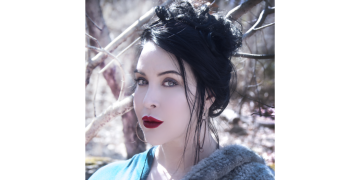KELLER I got to work with Bob on “The Magic Flute” at the Paris Opera in 1991. And one of the other Met assistants, Robin Guarino, had worked with him on “Hamletmachine” at N.Y.U. So we both knew the way he worked, and could shepherd him and get a product onstage he would be happy with. He had two of us he could trust.
DEBORAH VOIGT (soprano who sang Elsa in the opening run) I had a bit of experience with Bob: I had covered Jessye Norman as Gluck’s Alceste at Lyric Opera of Chicago in 1990. We covers were brought in for weeks before the principals. They lined us all on one side of the room and had us walk to the other side, telling us we had two minutes to do it — not a second longer or shorter. And we spent the next six weeks choreographing “Alceste,” and memorizing Bob’s style of movement. I learned what it was like to have his choreography imprinted on my body, and Debbie Voigt’s way of moving and using my body stripped away. That gave me a head start that some of my colleagues did not have.
In September 1991, Wilson’s version of “Lohengrin” premiered in Zurich.
BEN HEPPNER (tenor who sang the title role in the Met’s “Lohengrin”) I got a call from my Swiss agent, who asked me if I would be willing to jump in for “Lohengrin” in Zurich. I said OK, and if they can send me the video, I’ll try to learn the staging a bit. And my 7-year-old son was so bored; he had nothing else to do, and said: “Dad, I watched it and I’ll tell you what to do. First of all, there’s no sword fight in Act II” — he knew “Lohengrin” pretty well by this point — “and when you move, you’re like a robot, the way you move your arms. And oh yeah, Dad, when you walk, you have to walk like there’s something stuck in the crack of your bum.” With this in mind, I put on the tape, and, son of a gun, if he wasn’t right about everything.
KELLER Giuseppe Frigoni, the one who really honed the movement vocabulary, had created all these different moves for the chorus in Zurich. They had someone offstage prompting the chorus for those gestures, and at the Met, we wanted to cue the chorus seamlessly and silently. So with Joe Clark, the technical director, we devised these machines, like in a bakery, the “now serving 98” machines. We put these two big number machines on the edge of the pit so the audience couldn’t see them. And we devised a numerical system to cue the men and an alphabetical system for the women.























